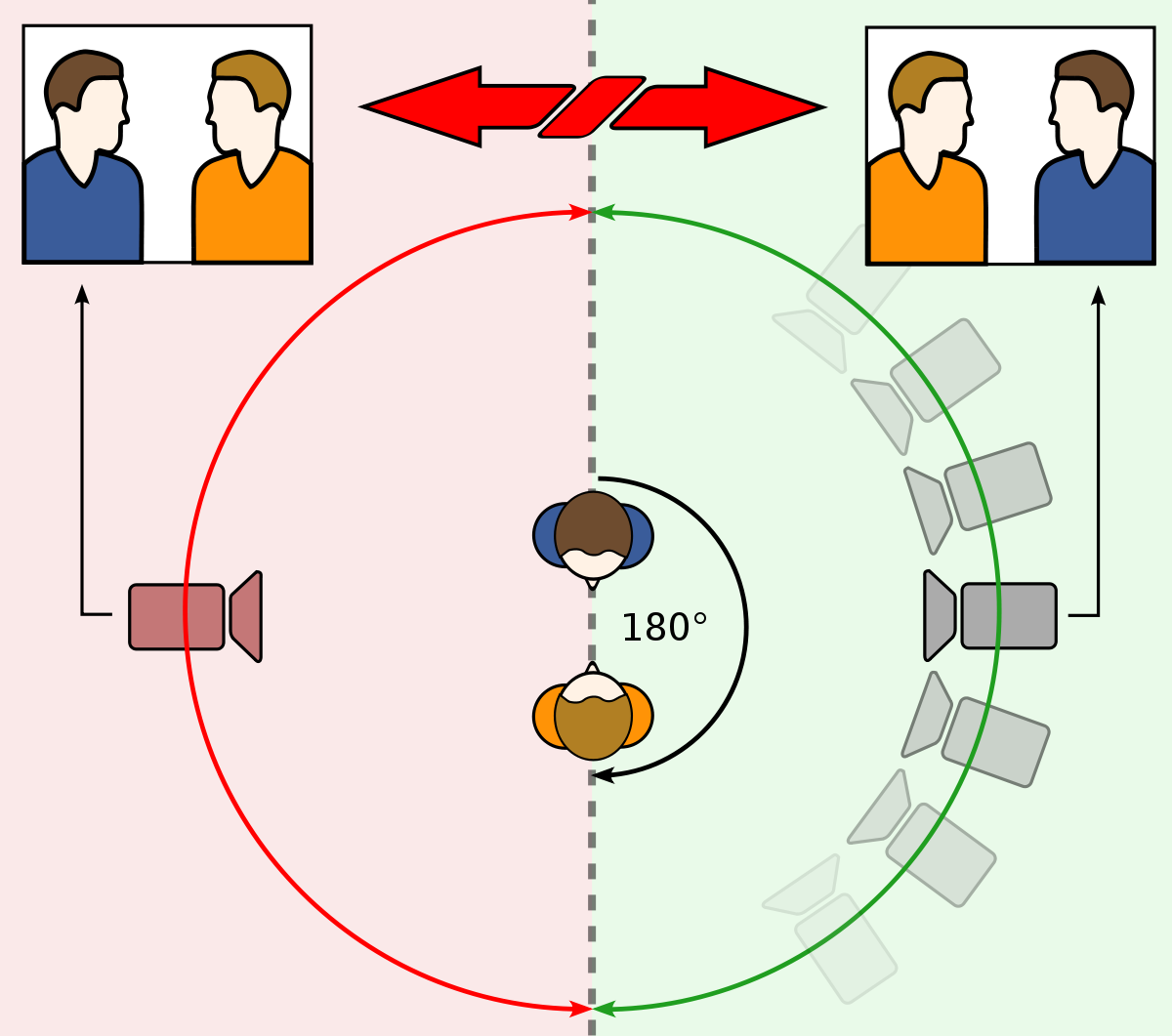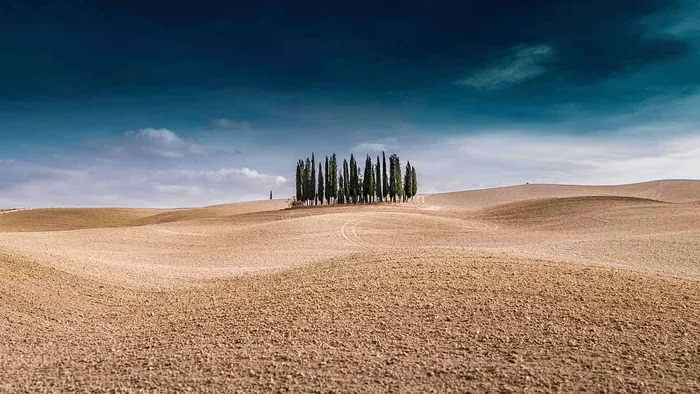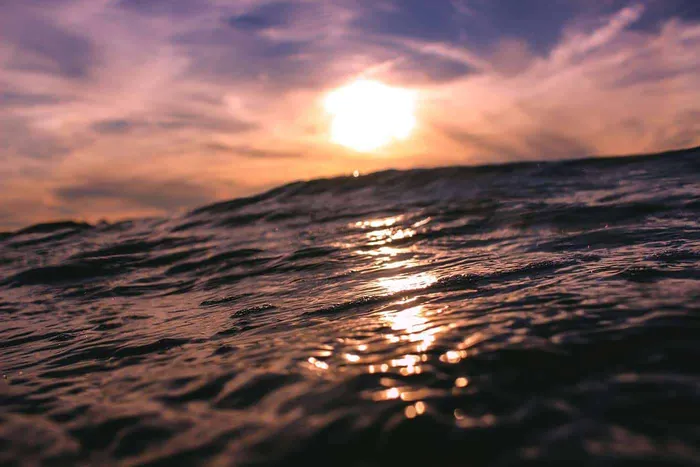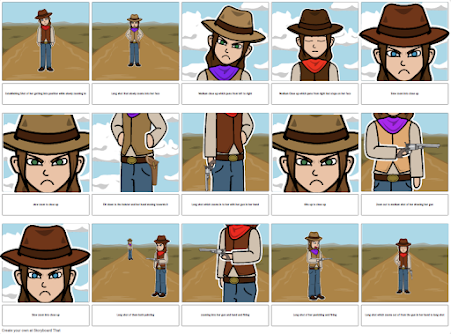Lights, Camara, Action
Wednesday 4th October 2022
Basic Rules
Composition Rules:
Law of thirds:
- split screen (grid 9)
Head Room:
- leave enough space above head
Looking Room:
- leaving space in the direction a person is looking
-have camera at eye level of the person/subject
you are filming NOT your eye level
you are filming NOT your eye level
180 Degree Rule:
The 180-degree rule states that two characters (or more) in a scene should always have the same left/right relationship with each other. The rule dictates that you draw an imaginary line between these two characters and try to keep your camera(s) on the same side of this 180-degree line.
The key to a pan or tilt is that the camera itself doesn’t move, so the viewer feels mostly like a spectator. If you want to move with a subject and make the viewer, feel like a part of the action, you can use a tracking shot, dolly shot, or crane shot.
-Tracking shot moves sideways
-Dolly shot moves forwards or backwards
-Crane shot moves up or down.
Homework-Research
Shot Type
The main shot types used in media production are: Establishing Shot: A long shot or extreme long shot, that usually has loose framing and shows the special relations between the important figures in the text, the objects included in the scene, and the setting of the scene.
Framing
Framing gives you the opportunity to manipulate shot composition, sizes, angles, and perception to enhance your storytelling ability.
Camera Angle
-Shooting from Below / Low Camera Angles:
Conversely, a low camera angle can give subjects a powerful, imposing presence within a photograph.
Conversely, a low camera angle can give subjects a powerful, imposing presence within a photograph.
-Looking Straight On / Point-of-View:
Shooting from straight on is a very matter-of-fact way of approaching a photograph. Something about looking at a subject face-to-face/eye-to-eye feels very honest.
Shooting from straight on is a very matter-of-fact way of approaching a photograph. Something about looking at a subject face-to-face/eye-to-eye feels very honest.
-Wide Angle Views:
Any wide image is going to provide the “bigger picture” of a scene and create a sense of distance for viewers.
Any wide image is going to provide the “bigger picture” of a scene and create a sense of distance for viewers.
-Close-up Shots:
Rather than showing off a grand scene, these shots focus on details like texture, color, and line. They’re intimate, inherently bringing us closer to the subject at hand.
-Tilted Angles:
Also known as a Dutch angle, A slight tilt throws everything off balance and causes tension for viewers. Depending on which way an angle is facing, tilts can feel smooth and natural or as if they’re resisting gravity altogether.
Also known as a Dutch angle, A slight tilt throws everything off balance and causes tension for viewers. Depending on which way an angle is facing, tilts can feel smooth and natural or as if they’re resisting gravity altogether.
Camera Movement
The simplest camera movement is a pan or tilt.
The simplest camera movement is a pan or tilt.
-Pan is when you keep the camera in one place and turn it to the side
-Tilt is when you turn it up or down.
The key to a pan or tilt is that the camera itself doesn’t move, so the viewer feels mostly like a spectator. If you want to move with a subject and make the viewer, feel like a part of the action, you can use a tracking shot, dolly shot, or crane shot.
-Tracking shot moves sideways
-Dolly shot moves forwards or backwards
-Crane shot moves up or down.
Shoot out feedback (editing not finished)
The task we were given was to create and film a shoot out scene, we needed to consider the type of camera shots and conventions we used while filming to create a film to the best of our abilities. I was in a group of three with Maria and Harriet however I did not film the shoot out and instead was one of the actors, we only filmed one shoot out between us which was not mine so I followed the instructions I was given and didn't give to much input into the filming side of our shoot out.
One of the conventions we attempted to use were the 180 degree rule, I think we were fairly successful in this as Maria (who filmed) stuck to one side of us at all times. Another convention I think we used well was head space as from editing the shots it appears we left enough head room from the top of the shots and our heads. As well as that i think we mostly left looking room most of the time during shots and only a few are a bit messy.
One of the conventions we attempted to use were the 180 degree rule, I think we were fairly successful in this as Maria (who filmed) stuck to one side of us at all times. Another convention I think we used well was head space as from editing the shots it appears we left enough head room from the top of the shots and our heads. As well as that i think we mostly left looking room most of the time during shots and only a few are a bit messy.
WWW:
-Clear narrative
-Shots cut well
-Good level of brightens
EBI:
-Length of shots
-Use tripod in future to reduce shakiness
-Clear narrative
-Shots cut well
-Good level of brightens
EBI:
-Length of shots
-Use tripod in future to reduce shakiness













good notes, where's the homework?
ReplyDelete